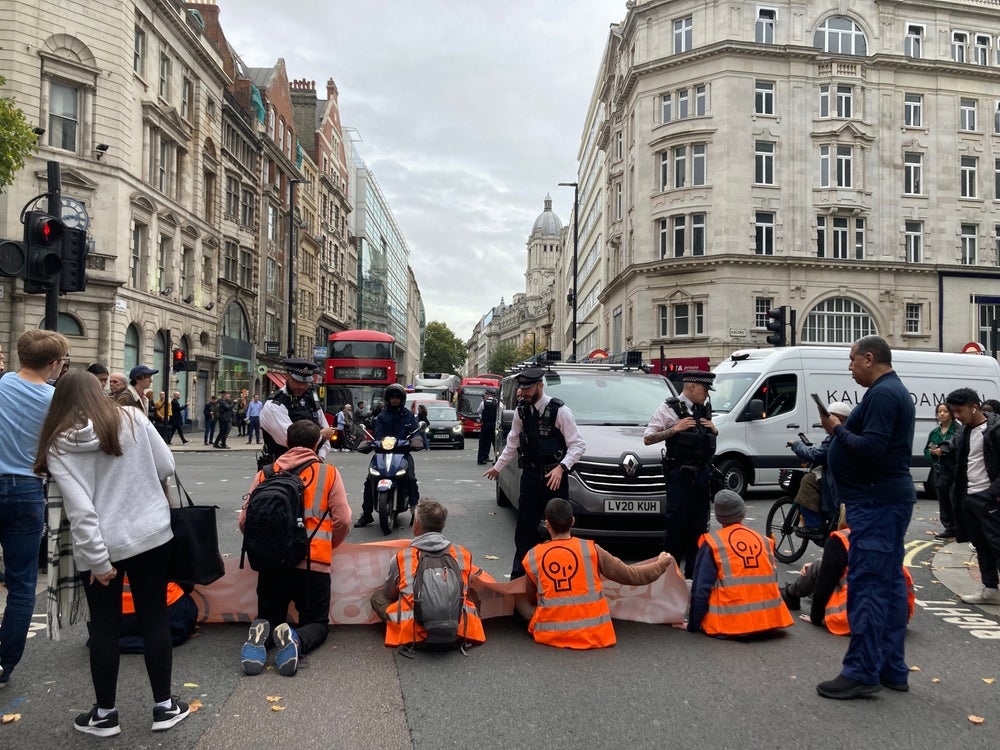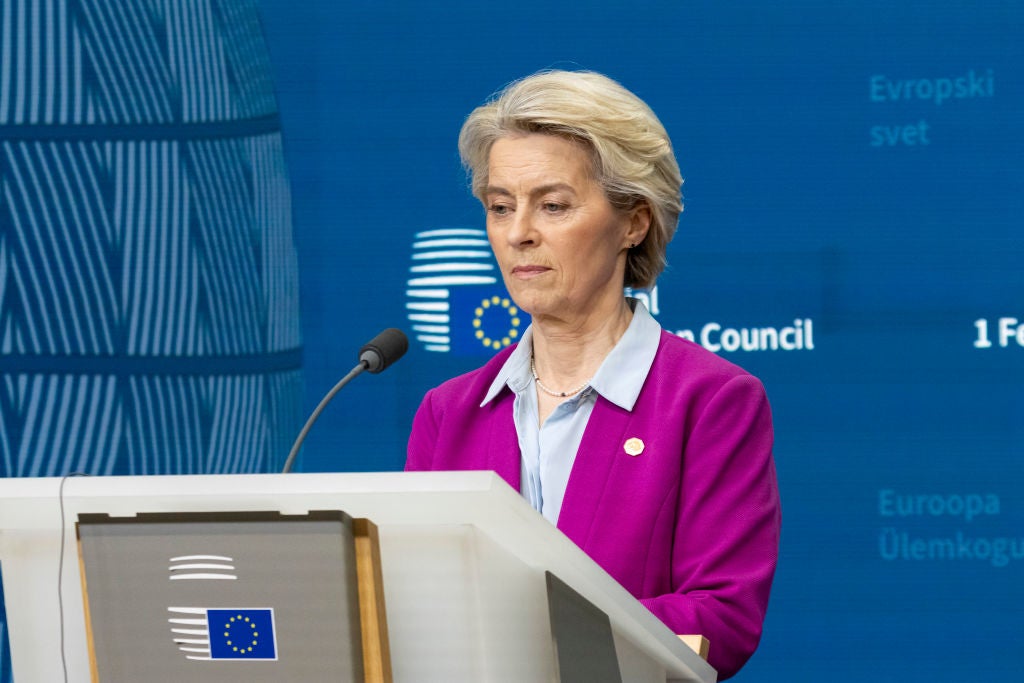Climate protesters in the Netherlands blocked a major highway through Amsterdam on 30 December, demanding that ING, the country’s largest bank, immediately stops financing fossil fuel projects. It was just the latest example of an increasingly fervent climate movement willing to disrupt the daily functioning of society in order to convince powerful stakeholders to take action. Indeed, last September alone saw a swathe of climate-related protests across 65 countries, with more than 600,000 people worldwide taking part in actions linked to a Global Fight to End Fossil Fuels.
Throughout history, such social movements have had a wide array of protest tactics available to them – 198, according the political scientist Gene Sharp – from marches and sit-ins to hunger strikes and self-immolation.
The climate movement, so far, has tended to adopt traditional tactics such as large marches and the direct targeting of governments and companies. However, a growing 'radical flank' is now taking the fight to the public, unsettling the lives of ordinary people by blocking traffic, throwing paint and food at much-loved artworks, and interrupting sports and cultural events in order to raise public awareness of climate change and expedite action against it.
It is a tactic that has been employed by a wide range of activist movements, from the suffragettes to Black Lives Matter, but there is still a lack of consensus as to whether it is actually succeeding in advancing the climate action agenda.
A radical shift
As social movements grow and their calls for action continue to fall on deaf ears, more extreme factions can splinter off to form what scholars call radical flanks. This happened in the civil rights movement when activists realised they could not achieve change through the established political and legal systems. As a result, some started using more confrontational tactics such as staged sit-ins, non-permitted marches and even riots.
Similarly, as global warming has intensified and climate shocks become more common and severe, a radical flank within the climate movement has emerged. “It is following a very similar trajectory to other social movements of recent history,” says Dana Fisher, director of the Center for Environment, Community & Equity and professor at the American University’s School of International Service. Her book on the subject, Saving Ourselves: From Climate Shocks to Climate Action, comes out on 12 February.
“So far, the disruptive protests have been performative rather than violent,” Fisher says. “None of the groups have been calling for violence or climate terrorism yet, but history teaches us that this will start to ramp up as climate change intensifies.”
The main players in the climate movement’s new radical flank include the likes of Extinction Rebellion, Climate Defiance, Just Stop Oil, Last Generation, Declare Emergency, and other members of the A22 network (“an international network racing to save humanity”). They all have different ‘theories of change’ underlying their disruptive tactics, and often there is not full agreement even within one group. “[However,] a common goal is to achieve media attention and increased salience around climate issues, given political salience’s positive influence on policymaking,” says James Ozden, director of the Social Change Lab, an organisation conducting and disseminating social movement research to help tackle the world's most pressing problems.
Historical precedent for these tactics can be found in the disruptive protests of the civil rights, women’s suffrage, gay rights and disability rights movements. In many of these cases, significant campaigns or victories were won due to disruptive, non-violent direct action by groups such as the Student Nonviolent Coordinating Committee, ACT UP! or Disabled in Action. “[However,] there is academic disagreement on whether the right analogy is being drawn from these other social movements,” says Ozden.
When it burst onto the scene in the UK in 2022, Just Stop Oil initially tried to target the oil industry directly. In April that year, the group succeeded in shutting down half of all oil terminals in south-east England. “But we received almost no media coverage,” recalls Just Stop Oil spokesperson Alex de Koning. “Around 80% of all the media in the UK is owned by three to five billionaires, so you don't get reported unless you are villainised. So we have to do actions that are controversial enough to break into the news cycle. Public disruption is effective.”
De Koning points out that Extinction Rebellion brought 90,000 people to London’s Parliament Square in April 2023 but got very little media attention for its efforts; in the same week, however, two Just Stop Oil protestors threw orange powder paint at a snooker match and received five front-page headlines and several million views on Twitter (now X). Similarly, when two Just Stop Oil protesters threw a tin of soup at Van Gogh's Sunflowers painting in London, it generated more media mentions about climate than when 33 million people were flooded out of their homes in Pakistan in October 2022.
Climate protests: are they working?
The evidence suggests it is rare for these tactics to influence government policy directly, but it has been known to happen. Extinction Rebellion Netherlands’ blocking of Amsterdam’s A12 highway in September induced the Dutch Parliament to move, on 10 October, towards a phasing-out of fossil fuel subsidies.
What protesters can most certainly influence is the news agenda. When a 2019 UK poll found that the environment had become one of the public’s top three most pressing issues for the first time ever, pollsters YouGov concluded a “sudden surge in concern is undoubtedly boosted by the publicity raised for the environmental cause by Extinction Rebellion”. The group had recently occupied prominent central London sites for two weeks. When Insulate Britain, a group campaigning for increased home insulation and energy saving across the UK, started protesting in September 2021, the number of mentions of ‘insulation’ in the UK print media doubled in the months after.
Social Change Lab has carried out several pieces of research that examine the impact of disruptive protest tactics on public opinion. In one case, using nationally representative YouGov surveys, the organisation identifies increased awareness of Just Stop Oil after a disruptive campaign increased support for more moderate climate organisations such as Friends of the Earth – a mechanism known as the 'radical flank effect'. For Ozden, the radical flank effect clearly shows the symbiosis of moderate and radical organisations, and the importance of a plurality of non-violent tactics.
“A lot of people really care about climate change but not enough to do anything about it; our tactics are aimed at shifting them to act,” explains de Koning. “Sure, it is going to make some people who already didn't care much really not care, but it is going to make more people take action. By doing something extreme, it makes things that were previously seen as extreme seem more normal.”
In other public opinion polling, Social Change Lab found no evidence that exposure to disruptive tactics reduces support for their cause. Although support for the protesting organisation might go down, the research found no negative effects on support for the goals of the movement. The study also found some positive indications of people being more willing to engage in climate action after being exposed to disruptive protests.
“However, most of this work focuses on public opinion, as it is one of the easier factors of social change to measure. Ultimately, groups care about changes in climate policy or carbon emissions, which is much harder to measure,” caveats Ozden.
Some recent studies have highlighted the impact of climate protest on political speech by legislators or on social media, often finding some positive effects such as increased climate discourse on social media. Most disruptive climate protests have been focused in Western Europe and the US, and they have had the most media attention in these regions too. This is potentially due to higher climate concern in these regions relative to other countries, as well as the futility of such tactics in less democratic countries like China. “I expect that disruptive tactics are most suited to these [Western] contexts, but there is little research on this topic,” says Ozden.
Specific policy victories can be hard to claim, as politicians are often reluctant to attribute success to an outside pressure group unless they are extremely popular. However, some recent examples include the UK parliament declaring a climate emergency after Extinction Rebellion demonstrations, or the Serbian Government revoking the licence for a new lithium mine after significant protests.
The research is far from conclusive. Confrontational tactics have often proven extremely unpopular, too. One recent opinion poll found that only 10–20% of a sample of the British and German populations had a positive opinion of climate groups such as Just Stop Oil and Letzte Generation (Last Generation), who have conducted disruptive protests over the past two years.
This unpopularity also stems from the perceived relevance of the tactics. Blocking an oil terminal, for example, could be seen as congruent with the aims of climate protesters. Conversely, blocking traffic and throwing paint at artworks can come across as incongruent and therefore seen as a nuisance by the public. This leads to what some scholars define as the ‘activist’s dilemma’, where groups must make a conscious choice between their desire for media attention and their popularity.
If we step back a little, the analysis of the efficacy of these tactics becomes even murkier. YouGov polling across Europe has shown little shift in public opinion about climate change since 2019. That would seem to indicate that the new radical flank and its socially disruptive tactics have so far had little impact in either direction. For Fisher, the real dilemma is that it is difficult to recruit large numbers to join risky and unpopular protests, and the increased publicity does not necessarily translate into greater public concern.
When the Social Change Lab surveyed 120 academic experts in sociology, political science and other relevant disciplines, 69% thought disruptive tactics were effective for issues – like climate change – that have high public awareness and support, compared with just 30% for issues with high awareness but low support, like anti-vaccination.

However, drilling down into the data, while 90% of the experts thought disruptive protests targeting the government were at least somewhat effective, only 50% thought the same about targeting the public.

Some of the climate groups have been grappling with this conundrum. Extinction Rebellion UK (XRUK), for instance, decided to stop using socially disruptive tactics at the end of 2022, and Ozden believes others will soon follow suit.
“We have pivoted our tactics to more clearly target pillars of power – such as fossil fuel companies, billionaire-owned media organisations and political parties – so that we have a better chance of bringing people along with us and achieving the numbers needed to create system change,” says Yaz Ashmawi, a member of XRUK’s strategy team. “We have found the media a lot less interested in reporting such actions. Nonetheless, our end goal remains rooted in mass protest.”
Both, not either
So, are socially disruptive climate protests actually working? That depends on what you mean by 'working'. There is some evidence to suggest they are succeeding in garnering more attention for the climate agenda, but it remains unclear whether that is leading to more climate action by governments and companies.
For Fisher, there is no question that the big climate policy successes of recent years would not have come about without all the protests. “[As to] the question as to whether it is more effective to work inside or outside the system, I would say it depends on who you ask and how they define success. I think they are both needed.”
De Koning agrees. He sees Just Stop Oil’s radical approach as complementary to XRUK’s more moderate role. “Think the suffragettes to the suffragists, or Malcolm X to Martin Luther King,” he says.
Fisher points out that the most successful social movements historically, including the civil rights and women’s suffrage movements, have involved groups that were working inside and outside the system, using more and less confrontational tactics. However, she warns, all these historical successes also relied on one key, common ingredient: violence. In all these movements, it was the pictures of bloodied activists, unarmed and engaged in non-violent civil disobedience, that mobilised the masses and pressured policymakers into change.
“One of the things that the climate movement needs to be prepared to do is lean into violence against them. That is going to be the moment when we see a shift in how many people are out in the streets,” says Fisher. She adds: “But as the world keeps warming, people will also be organically pushed towards mobilising and sympathising with these movements and their increasingly extreme tactics.”














